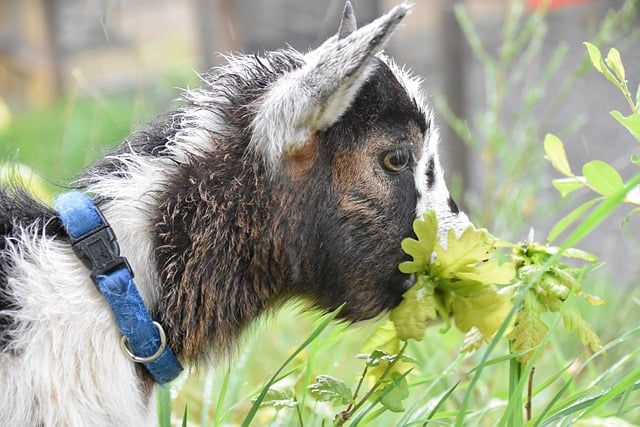Incorporating tree leaves into animal feeds can have significant economic and ecological impacts. This practice offers a sustainable approach to livestock nutrition that can benefit farmers, the environment, and the broader community. Here are some of the key impacts:

Economic Impact
- Cost Reduction: Tree leaves can be a cost-effective alternative to conventional feed, especially in regions where these are readily available. This reduces the cost of livestock production by lowering feed expenses.
- Increased Productivity: Some tree leaves, rich in nutrients and medicinal properties, can improve animal health, leading to increased productivity. Healthier animals can produce more milk, grow faster, and have better reproductive performance.
- Diversification: Using tree leaves as feed allows farmers to diversify their sources of livestock nutrition. This can reduce dependency on purchased feeds and mitigate the impact of price volatility in the feed market.
- Income Generation: Farmers with access to tree leaves as a feed resource can potentially generate income by selling surplus leaves or products derived from these trees, such as fruit, nuts, or medicinal products.
Ecological Impact
- Sustainable Land Management: Integrating trees into agricultural landscapes (agroforestry) can improve soil health, reduce erosion, and increase biodiversity. Trees also sequester carbon, contributing to climate change mitigation.
- Reduced Environmental Footprint: By utilizing locally available tree leaves, the environmental footprint associated with producing and transporting conventional feeds can be reduced. This includes lower greenhouse gas emissions and less use of fossil fuels.
- Biodiversity Conservation: Encouraging the growth and preservation of diverse tree species for livestock feed can contribute to the conservation of plant genetic resources and overall biodiversity.
- Enhanced Resilience: Trees are often more resilient to climatic variations and extreme weather events than annual crops. This makes tree-based feed sources more reliable in the face of climate change.
- Nutrient Recycling: Utilizing tree leaves as feed contributes to a closed-loop system where nutrients are recycled within the farm ecosystem. This can reduce the need for synthetic fertilizers, further decreasing the environmental impact.
Which tree leaves are suitable to feed animals?
Using tree leaves in agroforestry animal feeding is a fairly new area of research. Here is a short list of Tree species that are known to have a beneficial impact on animals.
| Tree Leaves | Suitable for | Notes |
| Moringa (Moringa oleifera) | Cattle, goats, sheep, poultry | High protein, enhances milk production and growth rates |
| Mulberry (Morus spp.) | Sheep, goats, cattle | Improves milk yield and quality in dairy cows |
| Leucaena (Leucaena leucocephala) | Cattle, goats, sheep | Contains mimosine, manage intake carefully |
| Acacia (Acacia spp.) | Cattle, goats, sheep | May contain tannins, requires careful management |
| Neem (Azadirachta indica) | Cattle, goats, sheep | Medicinal properties, use cautiously due to potential bitterness |
| Ficus (Ficus spp.) | Cattle, goats, sheep | Good fodder source during dry periods |
| Calliandra (Calliandra calothyrsus) | Dairy cattle, goats, sheep | Improves milk production, high protein content |
| Albizia (Albizia spp.) | Cattle, goats, sheep | Appreciated for protein content and palatability |
| Sesbania (Sesbania grandiflora) | Cattle, goats, sheep, poultry, rabbits | Rich in protein, contributes to nutritional requirements |
| Willow (Salix spp.) | Cattle, goats, sheep | Potentially valuable for cobalt and zinc deficiencies. Variation in mineral content suggests need for site-specific evaluation. Further research on palatability and practical application required. |
Tropical and Subtropical Regions
- Moringa (Moringa oleifera): Thrives in tropical and subtropical climates, where it is grown for its leaves, pods, and seeds.
- Leucaena (Leucaena leucocephala): Prefers tropical and subtropical climates, widely used for fodder in these regions.
- Neem (Azadirachta indica): Native to the Indian subcontinent, it grows in tropical and semi-tropical regions.
- Calliandra (Calliandra calothyrsus): Suited to tropical highlands, it’s used for soil improvement and as fodder.
- Albizia (Albizia spp.): Grows in tropical and subtropical regions, known for its fast growth and nitrogen-fixing abilities.
Temperate Regions
- Mulberry (Morus spp.): Can be found in temperate and subtropical climates, used for both silkworm rearing and as livestock fodder.
- Willow (Salix spp.): Grows in temperate regions, known for its adaptability to wet soils and use in bioenergy and fodder.
- Sesbania (Sesbania grandiflora): While primarily tropical, some species can adapt to warmer temperate regions.
Arid and Semi-Arid Regions
- Acacia (Acacia spp.): Adapted to arid and semi-arid regions, used for fodder, shade, and soil improvement due to its drought-resistant nature.
Wide Adaptability (Various Climates)
- Ficus (Ficus spp.): Includes species that thrive in a range of climates from tropical to temperate. They are versatile in use, from ornamental to fodder purposes.
How Tree Leaves can provide Food Security during drought
Drought-resistant tree leaf animal feed offers a sustainable solution for improving food security in drought-prone, impoverished regions by providing a resilient and nutrient-rich source of livestock nutrition. These trees, such as Moringa, Acacia, and Leucaena, not only reduce feed costs but also enhance livestock health and productivity, contributing to economic sustainability and environmental resilience. Incorporating these trees into agricultural practices supports soil conservation, biodiversity, and community empowerment. While challenges such as the need for knowledge dissemination and management of anti-nutritional factors exist, the strategic use of drought-resistant trees in animal feed has the potential to significantly mitigate hunger and support sustainable development in vulnerable communities.
An interesting 2019 study of the Woodlandtrust about using Willow leaves as mineral supplement

